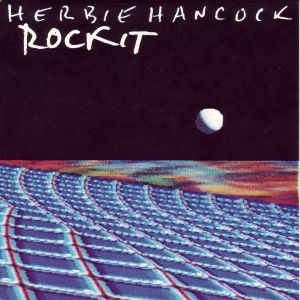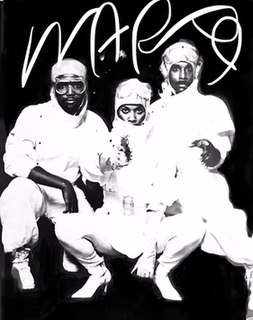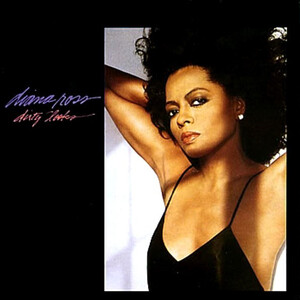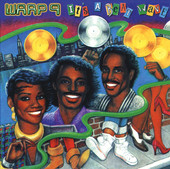
Marlon Williams, better known by his stage name Marley Marl, is an American DJ, record producer, rapper and record label founder, primarily operating in hip hop music. Marlon grew up in Queensbridge housing projects located in Queens, New York. He performed in local talent shows during the early days of rap music, further fueling his interest.
Old-school hip hop is the earliest commercially recorded hip hop music and original style of the genre. It typically refers to the music created around 1979 to 1983, as well as any hip hop that does not adhere to contemporary styles.

Fred Brathwaite, more popularly known as Fab 5 Freddy, is an American visual artist, filmmaker, and hip hop pioneer. He is considered one of the architects of the street art movement. Freddy emerged in New York's downtown underground creative scene in the late 1970s as a graffiti artist. He was the bridge between the burgeoning uptown rap scene and the downtown No Wave art scene. He was immortalized in 1981 when Debbie Harry rapped on the Blondie song "Rapture" that "Fab 5 Freddy told me everybody's fly." In the late 1980s, Freddy became the first host of the groundbreaking hip-hop music video show Yo! MTV Raps.

Yellow Magic Orchestra (YMO) is a Japanese electronic music band formed in Tokyo in 1978 by Haruomi Hosono, Yukihiro Takahashi and Ryuichi Sakamoto. The group is considered influential and innovative in the field of popular electronic music. They were pioneers in their use of synthesizers, samplers, sequencers, drum machines, computers, and digital recording technology, and effectively anticipated the "electropop boom" of the 1980s. They are credited with playing a key role in the development of several electronic genres, including synthpop, J-pop, electro, and techno, while exploring subversive sociopolitical themes throughout their career.

In music and music theory, the beat is the basic unit of time, the pulse, of the mensural level. The beat is often defined as the rhythm listeners would tap their toes to when listening to a piece of music, or the numbers a musician counts while performing, though in practice this may be technically incorrect. In popular use, beat can refer to a variety of related concepts, including pulse, tempo, meter, specific rhythms, and groove.
Electro is a genre of electronic music and early hip hop directly influenced by the use of the Roland TR-808 drum machines, and funk. Records in the genre typically feature drum machines and heavy electronic sounds, usually without vocals, although if vocals are present they are delivered in a deadpan manner, often through electronic distortion such as vocoding and talkboxing. This is the main distinction between electro and previously prominent genres such as disco, in which the electronic sound was only part of the instrumentation. It also palpably deviates from its predecessor boogie for being less vocal-oriented and more focused on electronic beats produced by drum machines.

"Rockit" is a composition recorded by jazz pianist Herbie Hancock and produced by Bill Laswell and Michael Beinhorn. Hancock released it as a single from his 1983 album Future Shock. The selection was composed by Hancock, Laswell, and Beinhorn.

The Beatnuts are an American hip hop group and production duo from New York City. Its current members are JuJu and Psycho Les. JuJu is a Dominican American from Corona and Psycho Les is a Colombian American from Jackson Heights, Queens. Although only peripheral members, they are routinely acknowledged by Q-Tip as being members of Native Tongues. The Beatnuts were originally a trio before Fashion, now known as Al' Tariq, left the group to start a solo career. V.I.C. was also a member of The Beatnuts' production team for a while.

Hip hop production is the creation of hip hop music in a recording studio. While the term encompasses all aspects of hip hop music creation, including recording the rapping of an MC, a turntablist or DJ providing a beat, playing samples and "scratching" using record players and the creation of a rhythmic backing track, using a drum machine or sequencer, it is most commonly used to refer to recording the instrumental, non-lyrical and non-vocal aspects of hip hop.

DJ-Kicks: Chicken Lips is a DJ mix album, mixed by Chicken Lips. It was released on 3 November 2003 on the Studio !K7 independent record label as part of the DJ-Kicks series.

Clive Campbell, better known by his stage name DJ Kool Herc, is a Jamaican-American DJ who is credited for originating hip hop music in the Bronx, New York City, in the 1970s through his "Back to School Jam", hosted on August 11, 1973, at 1520 Sedgwick Avenue. After his younger sister, Cindy Campbell, became inspired to earn extra cash for back-to-school clothes, she decided to have her older brother, then 18 years old, play music for the neighborhood in their apartment building. Known as the "Founder of Hip-Hop" and "Father of Hip-Hop", Campbell began playing hard funk records of the sort typified by James Brown.
Hip hop music or hip-hop music, also known as rap music, is a genre of popular music developed in the United States by inner-city African Americans. Puerto Ricans and Jamaicans also played a central role in the development of hip hop culture in the Bronx borough of New York City in the 1970s. It consists of a stylized rhythmic music that commonly accompanies rapping, a rhythmic and rhyming speech that is chanted. It developed as part of hip hop culture, a subculture defined by four key stylistic elements: MCing/rapping, DJing/scratching with turntables, break dancing, and graffiti writing. Other elements include sampling beats or bass lines from records, and rhythmic beatboxing. While often used to refer solely to rapping, "hip hop" more properly denotes the practice of the entire subculture. The term hip hop music is sometimes used synonymously with the term rap music, though rapping is not a required component of hip hop music; the genre may also incorporate other elements of hip hop culture, including DJing, turntablism, scratching, beatboxing, and instrumental tracks.

Lance Taylor, also known as Afrika Bambaataa, is an American DJ, rapper, and producer from the South Bronx, New York. He is notable for releasing a series of genre-defining electro tracks in the 1980s that influenced the development of hip hop culture. Afrika Bambaataa is one of the originators of breakbeat DJing.
"Change the Beat" is a song written and recorded by Fab Five Freddy, and one of the most sampled songs in music history. It was recorded at Martin Bisi's OAO Studio in Brooklyn, New York, United States, and released as a 12" single on the Celluloid label in 1982. This release and all subsequent pressings of the single feature two versions of the song, one on Side A and one on Side B. The official length of the tracks varies depending on the specific pressing of the single, with some releases mislabeling the running times entirely. The Side A version is 7:40 minutes in length and features Fab Five Freddy rapping in both English and French. He also performs the chorus of the song, utilizing a vocoder with a white noise carrier to achieve a gritty, robotic effect. The version of the song that appears on Side B is considerably shorter than the A-side track, clocking in at 3:42. Aside from the chorus, which, like the Side A, was performed by Fab Five Freddy through the vocoder, the lead vocals are performed by rapper Beside and rapped entirely in French, making this single one of the first multilingual hip-hop releases. Beside was credited as 'Fab 5 Betty' on the earliest pressings of the vinyl.

Lotti Golden is an American singer-songwriter, record producer, poet and artist. Golden is best known for her 1969 debut album Motor-Cycle, on Atlantic Records.
Boom bap is a subgenre and music production style that was prominent in the East Coast during the golden age of hip hop from the late 1980s to the early 1990s.

Warp 9, an American Sci-Fi themed electro-funk, hip hop group is best known for its ground breaking, influential singles including "Nunk," "Light Years Away," and "Beat Wave," which ranked among the most iconic groups of the electro hip hop era. Described as the "perfect instance of hip hop's contemporary ramifications," Warp 9 was the brainchild of writer-producers Lotti Golden and Richard Scher. The duo wrote and recorded under the moniker Warp 9, a production project at the forefront of the electro movement.

"Nunk" the first single by the group Warp 9, released on Prism Records in 1982, was written and produced by Lotti Golden and Richard Scher. The song appeared as a vocal and instrumental version on the group's 1983 debut album It's a Beat Wave on Prism Records and 4th & Broadway records in the UK.

"Dirty Looks" is a song from the 1987 album Red Hot Rhythm & Blues by Diana Ross. It was written by Lotti Golden and Richard Scher, and produed by Tom Dowd. It was also released as the album's lead single on April 29, 1987, by RCA and EMI. The song, which peaked at #12 on Billboard's Hot R&B Singles, originally appeared on Warp 9's second LP on Motown, Fade in, Fade Out. The European releases of Red Hot Rhythm & Blues features the short version of the song.

It's a Beat Wave is the debut album by American electro group Warp 9. Released in 1983, the album's producers, Lotti Golden and Richard Scher, "worked real emotion and intelligence into the world of experimental hip-hop and electro." Warp 9 was the moniker under which Golden and Scher created their brand of electro-futurism. The group's first single, "Nunk,"(1982), secured Warp 9's album deal with New York independent label Prism Records. The LP was released in 1983 in conjunction with the group's 3rd single, "Beat Wave." Warp 9's large following in the New York metropolitan area came to the attention of Island Records chief Chris Blackwell who signed Warp 9 to a world wide deal on Island Records.















